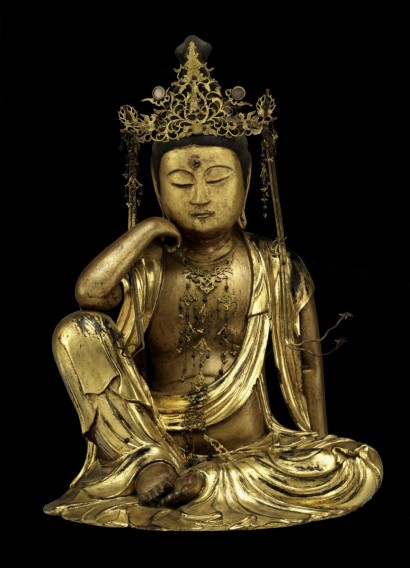Japan, Edo period, ca. 1693; wood with gold, gold leaf, lacquer, and crystal inlay; 16 9/16 x 12 1/8 x 10 1/4 in.; The Metropolitan Museum of Art, Rogers Fund 1956, 56.39, photo © The Metropolitan Museum of Art; source: Art Resource, NY.
Avalokiteshvara or Padmapani
Pakistan, Swat Valley, 7th century; bronze inlaid with silver and copper; 8 3/4 x 5 3/4 x 4 1/8 in.; The Metropolitan Museum of Art, Harris Brisbane Dick and Fletcher Funds, 1974, 1974.273, photo: www.metmuseum.org.
The gesture of hand to cheek is an enduring symbol of reflection, as seen here in both the Japanese and Indian examples. According to some scholars, it also indicates a moment when the bodhisattva compassionately gazes down on suffering beings from a transcendent realm. From this vantage point, Avalokiteshvara contemplates entering samsara to assist others in their quest for awakening.





